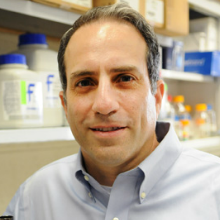This one year pilot study explores recent advances in HIV vaccines that focus on inducing “broadly neutralizing antibodies” (bNAbs). A bNAb is an antibody that defends a cell from HIV by neutralizing the virus, similar to the diphtheria vaccine given to infants that induces antibodies that neutralize the biological effects of diphtheria toxin. However, due to the high mutation rate of HIV, a vaccine that elicits a single neutralizing antibody, such as happens with the diphtheria vaccine, will not work since HIV mutates rapidly and therefore the target of the antibody is constantly changing. A novel idea is to engineer a vaccine that induces a special type of antibody that anticipates the mutation of the HIV and can neutralize many different strains of the virus rather than just one – these special antibodies are the bNAbs as discussed above.
An HIV vaccine based on this idea has shown efficacy in animal models and now needs to be tested in humans for its safety and immunogenicity. However, in order to determine if these antibodies can be made in this manner, it will be necessary to study lymph node tissue after vaccination rather than simply draw blood. The procedure that is used to obtain lymph node tissue is referred to as ultrasound guided fine needle aspiration or US-guided LN-FNA. Typically, lymph node tissue is biopsied only when an individual is sick with something like cancer or an infectious disease when the lymph nodes are enlarged and easily accessible. However, many important questions remain about whether this procedure would be feasible to use in clinical trials of experimental HIV vaccines in healthy adults, as we anticipate that the lymph nodes will not be very enlarged after vaccination. These issues include the volunteers’ tolerance of the procedure, the composition of the cells removed, and if it enables us to study a special kind of immune cell called a T Follicular Helper (TFH) cell. These cells are critical to the process of producing bNAbs. As proof-of-concept for the feasibility of using US-guided LNFNAs, we plan to immunize 6 healthy adult volunteers with a licensed Hepatitis B virus vaccine (ENGERIXB), as it induces an antibody response similar to that proposed for the bNAb-inducing HIV vaccines. Three doses of the vaccine will be given by injection in the shoulder muscle using a 0,1, and 6-month schedule. LN-FNAs will be done one week after the second and third vaccinations by placing a small needle in the armpit and using ultrasound to guide the needle to get cells from the lymph nodes there that are close to the site of the vaccinations. Hence, the reasearchers would like to expand their capacity to test “start-of-the-art” HIV vaccines at GW.


